How to Care for a Bonsai Tree - Bonsai Tree Types, Price and Care
A bonsai tree is a very popular plant. Many would like to have in their home, but are afraid that they won't be able to take care of it. It's definitely not the best choice for those who have no idea about plants. But if you have the basic knowledge, you will manage. Check how to care for a bonsai tree and what you should know about it. It's important.
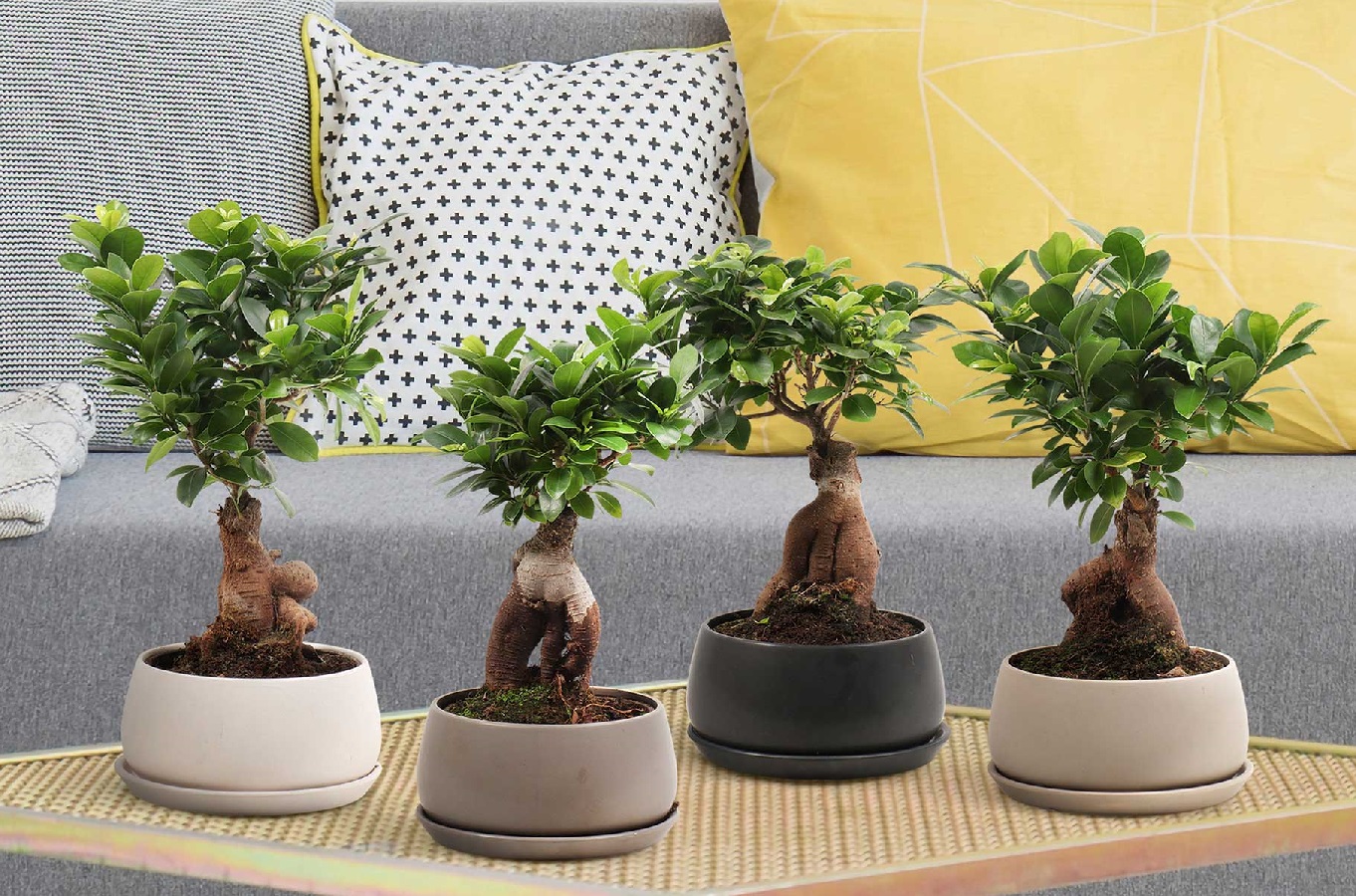
Bonsai tree - what kind of plant is it?
A bonsai tree is a unique looking plant. It looks like a miniature tree, which is very impressive. But those who are interested in history, can reach some interesting facts about this plant. They concern the name itself. Bonsai is connected with Japanese culture - also by its name which consists of two parts:
- Bon - which means a low tray or a pot,
- Sai - which means a plant.
In a literal translation - a bonsai tree is a plant grown in a low pot, which confirms the general idea of it.

Bonsai plant - most common species
Many still think that bonsai tree is a particular type of plant. As it turns out, many species of trees, shrubs and even houseplants can take this form. Here are the most popular types of bonsai trees:
- Japanese maple,
- larch,
- cypress,
- creeping juniper,
- dwarf pine,
- rhododendron,
- schefflera,
- gardenia,
- elm.
There are many options. Everything depends on what the future bonsai tree owner expects. You can grow and form the plant yourself or purchase one in a flower shop or plant nursery.

Bonsai tree - a plant that needs forming
Forming is the basic element of caring for bonsai plants. It’s considered a form of art. Keep in mind it’s not the easiest task - although you don’t have to stick to a one specified shape. Thanks to this, every model is unique and different.
There are several types of shapes and guides on how to form the plant to achieve a particular result. They have exotic names:
- Chokkan,
- Bankan
- Shakan,
- Hokidachi,
- Kengai,
- Han-Kengai,
- Bunjingi,
- Sekijoju,
- Moyogi,
- Yose-uye.
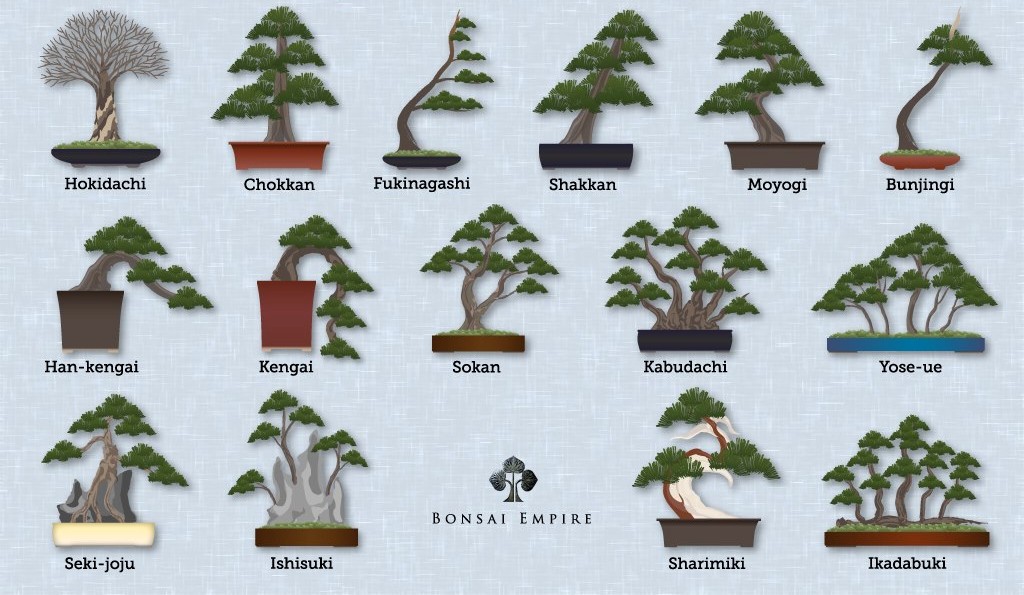
Chokkan and Hokidachi are the simplest bonsai tree shapes for beginners. All you have to do, in this case, is take a look at the picture and trim the plant similarly.
Those who aren’t afraid of risk can also try to create their own bonsai shape. Just remember about regularity. In some cases, just trimming branches is not enough. Certain plants (especially trees) require wiring of their branches and, interestingly enough, the roots. This is the only way to hinder the growth.
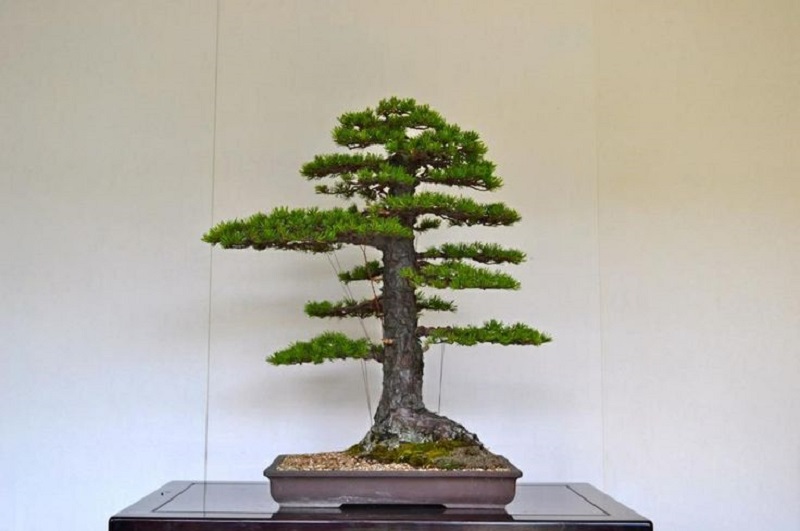

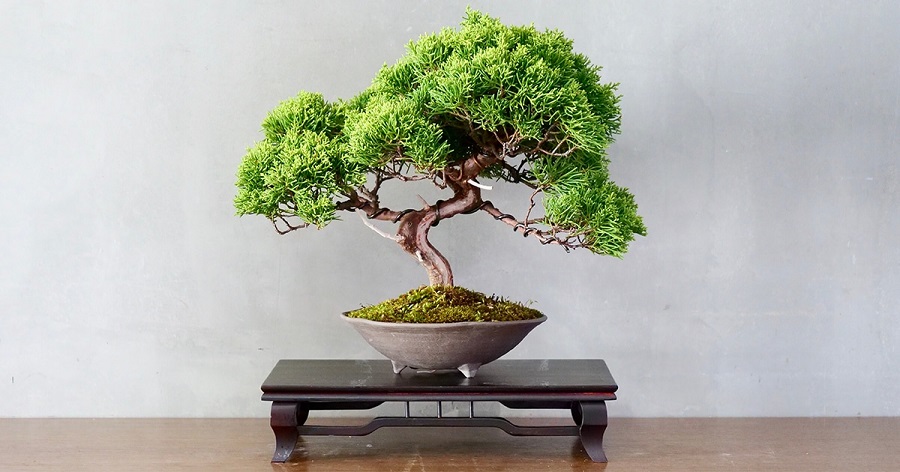
How to care for a bonsai tree?
If you decide to get a bonsai tree, you have to know it’s a plant that requires more attention than ordinary houseplants. In addition to proper conditions, a bonsai plant also needs regular care. It’s not the best option for forgetful people and those who have no time.
Do bonsai trees need direct sunlight?
The place where you can put your bonsai tree mostly depends on the plant species you pick. In most cases, it should be bright - but the sunlight should be indirect. It means it cannot be placed directly on a windowsill. But a table or a dresser standing close to a window is a good choice.
Not enough sunlight and putting a bonsai plant in a dark room might cause it to quickly die off. Be careful about that.

Do you have to fertilize a bonsai tree?
If you provide good conditions to your tree, you typically don’t have to feed it. But keep in mind it’s a very individual matter. Learn to observe your plant and how it behaves during different seasons. It might start shedding leaves or yellowing. In this case, you might need to use certain nutrients.
How to water a bonsai tree?
Watering a bonsai plant is another hard to determine issue. A lot depends on the plant’s type picked by you. As gardening experts suggest, avoid sticking to general patterns which might lead to overwatering. Make sure to observe and water the plant when the soil in the pot is getting dry.
What is the best temperature for a bonsai tree?
An indoor bonsai tree is typically not very demanding as for the temperature of its surroundings. Room temperature is the best option - between 18 and 22°C (64.4-71.6°F).
Don’t put the plant close to a radiator in winter. The heat it emits might cause damage.

How long do bonsai trees take to grow?
A bonsai tree is a solution for exceptionally patient people. As it turns out, you can expect the first results only after a few years. It involves the forming process, which is performed by trimming and wiring. Even the smallest neglect in this regard results in a different shape than expected.
Because of the long waiting time until the first results appear, many people decide to purchase a formed bonsai tree. It also needs special care, but to a lesser extent than during the first years.
Interestingly enough, bonsai trees are an heirloom passed on from generation to generation. The oldest known bonsai plants have over 800 years. It’s a result of the labor of not just one person but of many generations who put effort to this fascinating art.
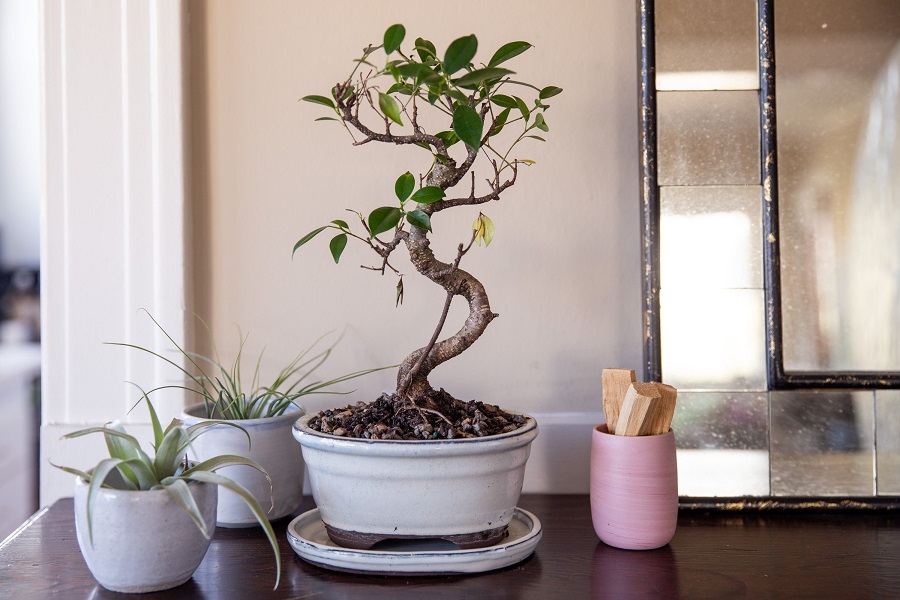
How to pick a pot for a bonsai plant?
Many people don’t find picking a pot for a plant anything important as long as the plant fits. But when it comes to bonsai trees, finding the right container is one of the most crucial issues. Bonsai art experts stress that it’s not just a matter of appearance. Shape and size of the container is the most important. They help with forming the shape of the plant, so make sure to follow a few rules in this regard.
Height and length of the pot are the most significant dimensions. The height depends on the trunk width. The smaller it is, the lower the container. The length is calculated based on the height of the bonsai tree - it should be 2/3 of this dimension.
Bonsai trees in rectangular containers are the most common ones. But that’s not the only option. The pot can be round and oval as well - it only needs to match the size requirements.

Where to buy a bonsai tree?
Bonsai plants are quite popular nowadays, so there’s no problem with their availability, as it might have been several years ago. In fact, you have two options.
- You can purchase a plant you are going to form from the beginning - in this case, less difficult species are recommended. You can find them in every plant nursery and gardening store.
- Alternatively, you can purchase an already formed bonsai tree and simply maintain its shape.
Bonsai tree - price
Prices of bonsai trees differ. They depend on different factors. Take a look at the most important ones:
- the plant’s species,
- size,
- age,
- shaping style.
The older and more interesting the bonsai tree - the higher the price. Small plants cost from $15 to $100. But don’t expect a plant larger than 10-40 cm, in this case.
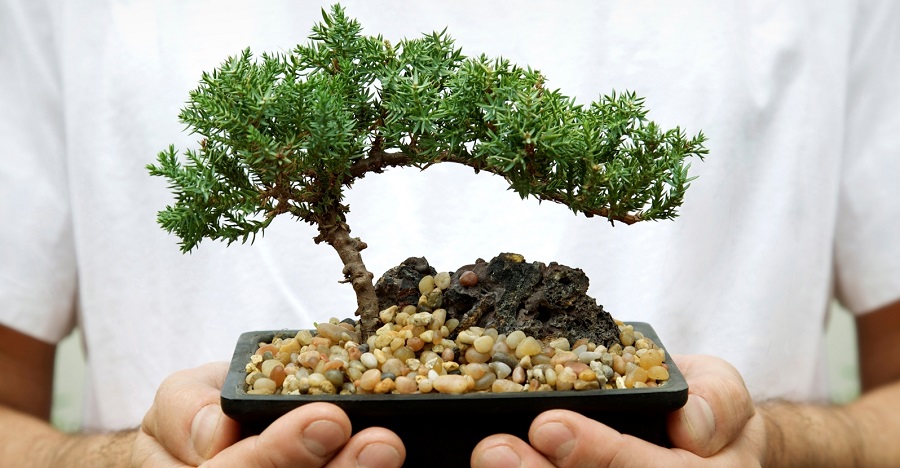
📍 Bonsai tree care for beginners - how to do it?
Caring for a bonsai plant involves mostly observation. It needs a bright place to grow and room temperature. Watering is not regular - only when the plant really needs it and the soil starts to get dry.
📍 How to form a bonsai tree?
Forming a bonsai tree and maintaining its shape is the most important part of caring for such a plant. You not only have to trim, but also wire branches and roots. Each of these elements decides on the plant's shape.
📍 Where to buy a bonsai?
It's best to purchase a bonsai tree from a trusted source. It can be a flower shop, gardening center or even a plant nursery. It's important, as this way you can be sure your bonsai tree is healthy and will grow well.
📍 How to properly water a bonsai plant?
There is no general rule for watering bonsai trees. In mostly depends on the environment in which the plant grows. Typically, it should be done every day, although we recommend observing the soil in the container.
Featured articles




